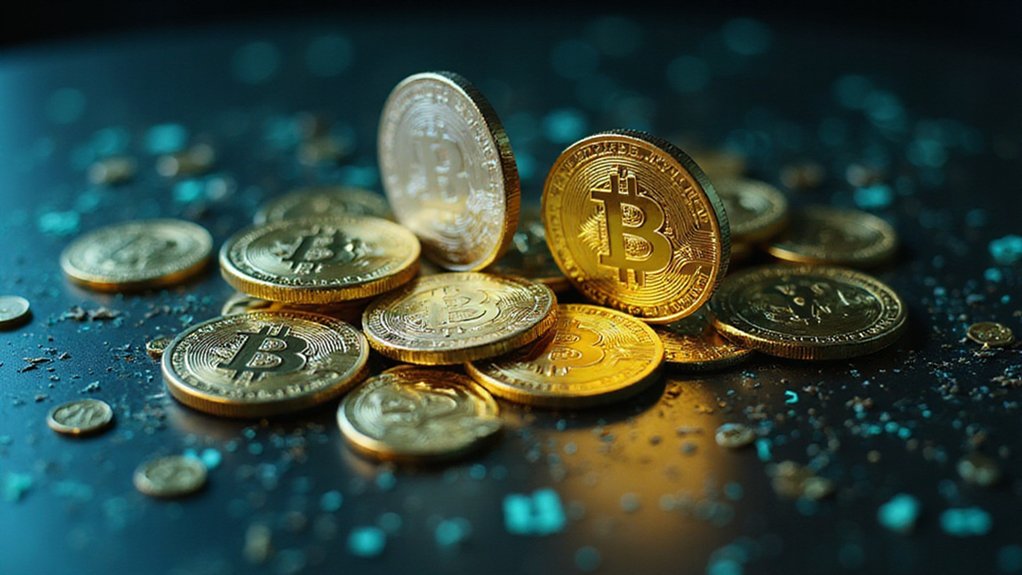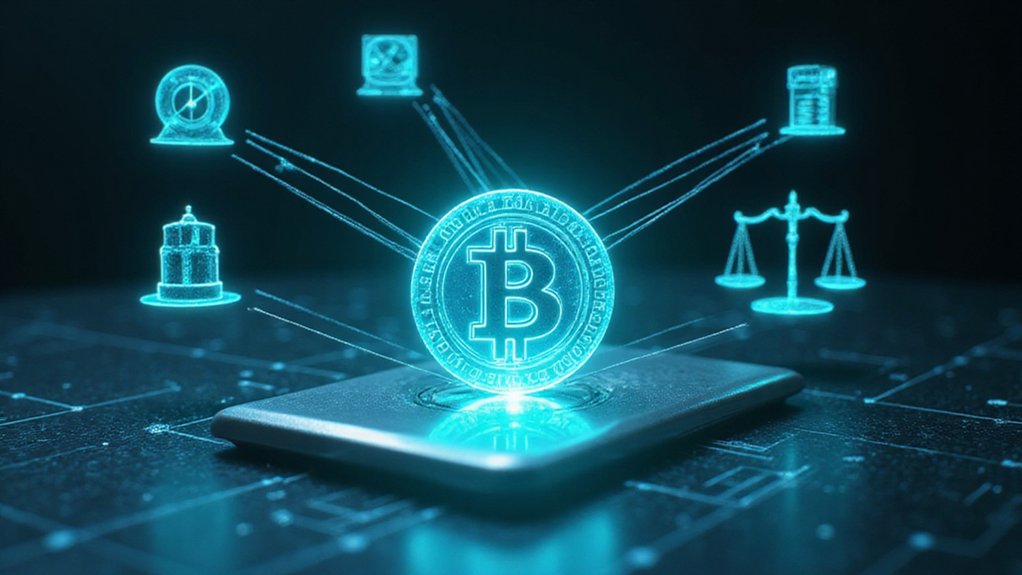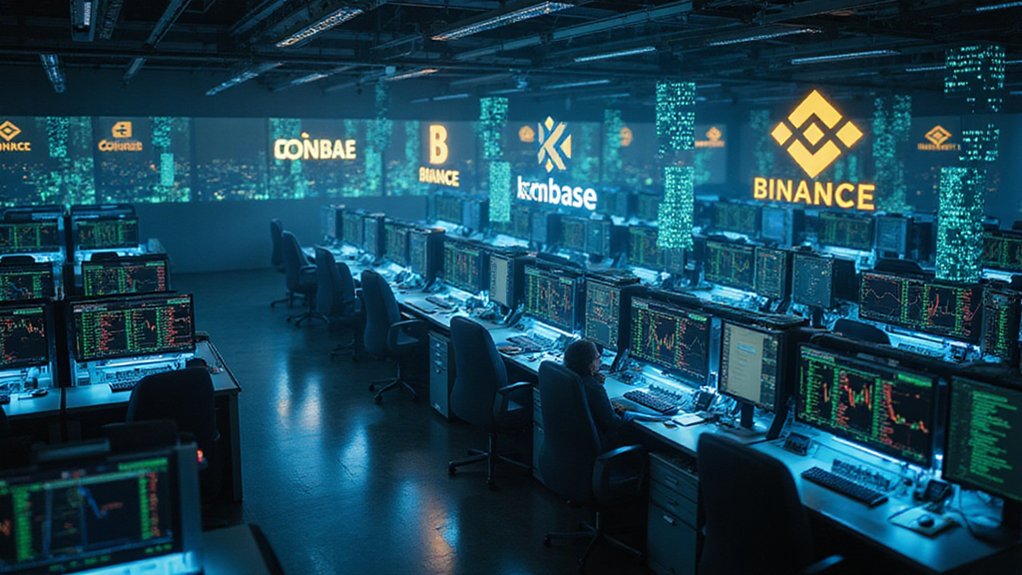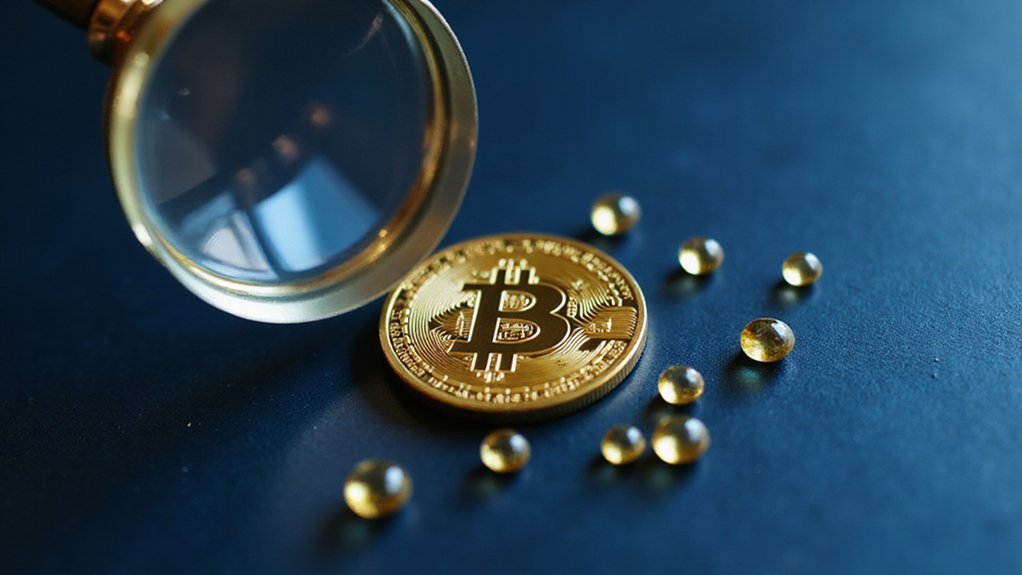In crypto, “minted” refers to the creation of new digital assets without central authority involvement. Unlike mining’s energy-intensive Proof-of-Work process, minting typically employs Proof-of-Stake, where validators stake existing coins to generate new ones—a substantially greener approach. The blockchain records these freshly minted assets, whether fungible tokens, NFTs, or stablecoins, providing transparency while maintaining market liquidity. This decentralized issuance method fundamentally underpins the entire cryptocurrency ecosystem’s economic mechanics and sustainability. The distinction reveals much about a project’s environmental footprint.

When delving into the labyrinthine world of cryptocurrency, one inevitably encounters the term “minting”—a concept as fundamental to the digital asset ecosystem as it is frequently misunderstood. At its core, minting represents a decentralized method of generating new cryptocurrency coins or tokens without the involvement of a central authority—a process that stands in stark contrast to traditional currency issuance mechanisms controlled by central banks (who, one might note, seem perpetually enamored with the printing press).
The minting process typically leverages the Proof-of-Stake (PoS) consensus algorithm, wherein validators stake their existing assets to create new blocks and, consequently, earn the right to mint fresh tokens. Beyond staking, the blockchain randomly selects participants based on their staked amount to validate transactions and create new blocks. Successful validators receive new tokens and fees as rewards for their participation in the network. These newly minted coins are subsequently added to the blockchain, becoming available for circulation and trade in markets that occasionally exhibit the stability of a tightrope walker in a hurricane.
It bears emphasizing that minting differs substantively from its conceptual cousin, mining. While both serve to create new cryptocurrency units, mining employs the Proof-of-Work (PoW) algorithm—a notoriously energy-intensive process requiring computational power that could, in some cases, power a small nation. Minting, by contrast, demands substantially less electricity, making it the darling of environmentally conscious crypto enthusiasts.
The blockchain serves as the backbone of the minting process, functioning as a public ledger where transactions are validated and permanently recorded. This decentralized architecture guarantees transparency and resistance to manipulation—qualities one might wish were more prevalent in traditional financial systems. Beyond cryptocurrencies and NFTs, the technology also enables the creation of digital domain names as permanent, decentralized records on the blockchain.
Economically, minting maintains market liquidity by ensuring a steady supply of new coins, while simultaneously supporting cryptocurrency viability through participant incentivization. The process extends beyond fungible tokens to encompass non-fungible tokens (NFTs)—unique digital assets representing ownership of specific items—and stablecoins, which are designed to mitigate the notorious volatility that has become the calling card of the cryptocurrency market. In this intricate ecosystem, minting stands as both creator and guardian, continuously breathing life into the digital asset landscape.
Frequently Asked Questions
How Do Minting Fees Differ Across Various Blockchain Networks?
Minting fees across blockchain networks exist in a remarkably disparate ecosystem.
Ethereum commands premium rates ($50-$500+) due to its market dominance—a case of paying for popularity, if you will.
Meanwhile, alternatives offer striking economies: Solana ($0.00045), Binance Smart Chain (<$0.05), and Polygon ($0.003) present cost-effective options for the budget-conscious creator.
These variations stem from fundamental differences in network congestion, transaction processing mechanics, and the underlying economic models powering each blockchain’s infrastructure.
Can Minted NFTS Be Burned or Permanently Deleted?
Minted NFTs can be “burned” by sending them to inaccessible null addresses, effectively removing them from circulation—a curious financial disappearing act that isn’t quite as permanent as it sounds.
While the token becomes unusable, blockchain’s immutable nature guarantees the underlying data persists indefinitely.
This peculiar contradiction (burned yet eternally present) highlights a fundamental limitation of blockchain technology: true deletion remains elusive, as records are designed for permanence rather than erasability.
What Environmental Impacts Are Associated With Crypto Minting?
Crypto minting—particularly in proof-of-work systems—leaves an environmental footprint that would make even the most ardent industry defenders wince.
The process consumes electricity at nation-state levels, generates substantial e-waste through rapidly obsolete hardware, and depletes water resources for cooling operations.
Mining facilities, often powered by fossil fuels, contribute substantially to carbon emissions while occupying vast tracts of land.
The industry’s environmental toll remains at odds with global decarbonization efforts, despite occasional greenwashing attempts.
Is Minting Cryptocurrency Considered Taxable in Most Jurisdictions?
Cryptocurrency minting typically constitutes a taxable event in most developed jurisdictions, though the specifics vary wildly.
The US, UK, and much of the EU classify minted assets as taxable income at fair market value upon creation—a position that seems eternally resistant to crypto advocates’ protests.
Tax havens like El Salvador and the Cayman Islands offer respite from such obligations, naturally.
Self-employed minters face additional complications, including potential self-employment taxes that compound their already Byzantine reporting requirements.
How Does Minting Affect a Cryptocurrency’s Market Value?
Minting’s impact on cryptocurrency valuation operates through classic supply-demand mechanics, albeit with digital-age twists.
Token issuance fundamentally increases circulating supply, potentially diluting value unless matched by proportional demand growth.
Fixed-supply protocols (Bitcoin’s 21M cap) cultivate scarcity premiums, while variable models must balance inflationary risks against network incentives.
Market psychology plays an outsized role; perceived over-minting triggers sell-offs, while transparent, predictable issuance schedules tend to foster investor confidence.
Burn mechanisms, when implemented alongside minting, frequently neutralize dilutive effects.









